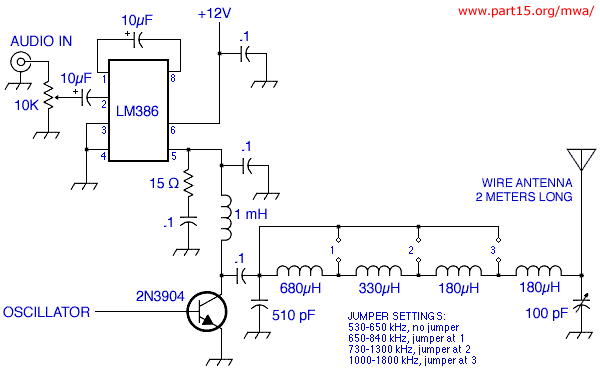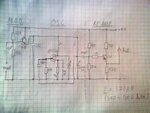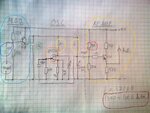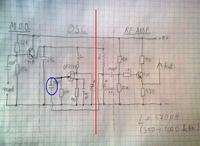Eshal
Advanced Member level 1
- Joined
- Aug 29, 2012
- Messages
- 470
- Helped
- 16
- Reputation
- 32
- Reaction score
- 15
- Trophy points
- 1,298
- Location
- Nowhere :)
- Activity points
- 5,149
@ goldsmith
1) circuit diagram of the low level AM Transmitter.
2) costs of components used in the circuit diagram of the low level AM Transmitter.
I want you (goldsmith) provide me a simplest low level AM transmitter, so that I could prepare my proposal and show the circuit diagram to my teacher by 5th of September, with following conditions,
1)AM transmitter should be low level,
2)It must not use any crystal anywhere in the circuit,
3)Range must be at least 30m.
4)carrier oscillator must be simple i.e. with RC dependent circuit (as my teacher told)
Then after 5th September I have more 3 weeks to assemble the whole circuit on the breadboard, during this time you can teach me briefly about the circuit i.e. about major portions. But I urgent need a complete and simple low level AM transmitter circuit with 30m of range without any use of crystal (as underlined above).
@ FvM
@ LvW
Actually, I really want to learn something, but I have no much time. Till the day after tomorrow I will have to submit a proposal, in which two major things are included,If you need a complete circuit , i have thousands of these circuits in my designs . i can give you some of them easily , but you have told that you want learn , it is the reason that why i didn't give you the final circuit !
1) circuit diagram of the low level AM Transmitter.
2) costs of components used in the circuit diagram of the low level AM Transmitter.
I want you (goldsmith) provide me a simplest low level AM transmitter, so that I could prepare my proposal and show the circuit diagram to my teacher by 5th of September, with following conditions,
1)AM transmitter should be low level,
2)It must not use any crystal anywhere in the circuit,
3)Range must be at least 30m.
4)carrier oscillator must be simple i.e. with RC dependent circuit (as my teacher told)
Then after 5th September I have more 3 weeks to assemble the whole circuit on the breadboard, during this time you can teach me briefly about the circuit i.e. about major portions. But I urgent need a complete and simple low level AM transmitter circuit with 30m of range without any use of crystal (as underlined above).
Yes, your advice is pretty appreciable. I think in the same way as you. And Shayaan's internet is not running. His internet is crap and now it is stopped that's why he is not come to the forum, as he told me that he is making a project (audio amplifier under supervision of goldsmith) but he is out of internet service.Yes shayaan have told me regarding this issue , and i told him that here is the same too ! ( an advice : try to learn yourself , instead of trying to rely on teachers of your university ! )
By the way where is shayaan now ? is he busy too ? because i didn't see him here any more ( this month ) .
@ FvM
Thank you. Well I have already seen these links and don't like circuit because they don't satisfy my conditions (i.e. proposed by my teacher)Searching for "AM transmitter" at electronic boards and google will give you plenty of hits, possibly more than you can handle. Below two arbitrary links with some background information about antenna tuning and legal aspects.
**broken link removed**
**broken link removed**
Of course, if the project stays with pencil and paper, there's no legal issue. Before going to operate real stuff, I would expect some legal information from the teacher.
@ LvW
Thank you that you can feel this, I appreciate all of you people' help. What information you want please tell me I will try to provide, as I have no much time, now I have just 2 days remaining in submitting of the proposal.I have the feeling that you are under strong time pressure now. Of course, all of us want to help you - however, it is not easy for us because lack of information.
We have studied basic op-amp i.e. 741C. So we can use any op-amp.You are allowed "to use those Integrated Circuits which are studied under course named "Linear Integrated Circuits"(LIC)."
How could we know which IC's you have studied?
What means "741C etc".
Today, I personally asked my electronic communication teacher that you forbid us to use crystal oscillator so can we use Hartely, Colpits, Wein-bridge or phase shift oscillator. So he replied, don't use integrated circuits, although we have studied op-amp but he refused to use these types. He further said, use simple RC network to generate carrier, as goldsmith showed in post#18.For example, are you allowed to use a fast opamp with at least 10 MHz transit frequency? Remember: The 741 has only 1 MHz.
This is important because for carrier frequencies in the range of several hundreds of kHz the 741 cannot be used.
Of course, as an alternative you can use discrete transistors (instead of opamps) - but the design is more complicated.
Therefore, I have recommended an opamp based design (two units: Oscillator and differential amplifier IC). But you need a broadband opamp (as mentioned above).
Last edited by a moderator:



